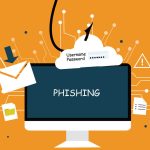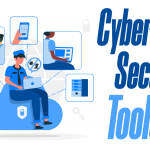In today’s digital age, small businesses are increasingly becoming prime targets for cybercriminals. Many small companies assume they are too small to be attacked, but that’s far from the truth. According to the Verizon 2024 Data Breach Report, nearly 43% of all cyberattacks target small businesses. With limited IT budgets and staff, small companies often lack the cybersecurity defenses that larger organizations have, making them vulnerable to ransomware, phishing, and data breaches.
The good news is that with the right strategies and awareness, small businesses can build strong protection without breaking the bank. Here are the top 10 cybersecurity best practices every small business should implement to stay safe online.
Table of Contents
1. Educate Employees About Cybersecurity
Human error is one of the biggest cybersecurity risks. A single careless click can open the door to hackers. Conduct regular training sessions to help employees recognize phishing emails, fake websites, and suspicious attachments. Platforms like KnowBe4 offer effective cybersecurity awareness programs tailored for small teams.
Encourage a “zero trust” mindset where employees always verify before they click or share sensitive information.
2. Use Strong and Unique Passwords
Weak or reused passwords are a hacker’s dream. Every account, device, and system should have a unique, complex password. Encourage employees to use a password manager such as Bitwarden or 1Password to store and generate secure credentials. Passwords should include a mix of uppercase letters, lowercase letters, numbers, and special symbols.
Also, require employees to change their passwords every few months to minimize risk.
3. Enable Multi-Factor Authentication (MFA)
Multi-Factor Authentication adds an extra layer of protection by requiring two or more verification steps, such as a password plus a one-time code or biometric scan. Even if a hacker steals a password, MFA can block unauthorized access. Most major platforms, including Google Workspace and Microsoft 365, support MFA for business accounts.
4. Keep Software and Devices Updated
Outdated software often contains security flaws that hackers exploit. Always update operating systems, browsers, and applications as soon as patches are released. Enable automatic updates wherever possible. This includes antivirus programs, routers, and even IoT devices like printers and cameras.
Regular patching helps eliminate vulnerabilities before cybercriminals can exploit them.
5. Backup Data Regularly
Data loss can occur due to ransomware, accidental deletion, or hardware failure. Regular backups are your best defense. Implement a 3-2-1 backup strategy: keep three copies of your data, store them on two different types of media, and have one copy stored offsite or in the cloud. Services like Backblaze or Google Cloud Storage offer reliable and affordable backup solutions.
6. Use Firewalls and Antivirus Software
A firewall acts as a barrier between your internal network and external threats, while antivirus software detects and removes malicious programs. Most operating systems include built-in firewalls, but businesses can enhance protection with enterprise solutions such as Cisco Secure Firewall or Norton Small Business.
Ensure antivirus and firewall settings are always active and updated.
7. Secure Wi-Fi Networks
Unsecured Wi-Fi is an easy entry point for hackers. Always use strong WPA3 encryption on business routers and change the default admin credentials immediately. Create a separate guest network for visitors to prevent unauthorized access to company devices. Disable SSID broadcasting if possible, so your Wi-Fi name isn’t visible to outsiders.
8. Protect Mobile Devices
Mobile devices are often overlooked in cybersecurity strategies. Yet, they store sensitive data, emails, and credentials. Require password or biometric protection for all business phones and tablets. Use mobile device management (MDM) tools like Intune to remotely wipe or lock lost devices. Avoid connecting to public Wi-Fi for business activities.
9. Limit Access and Use the Principle of Least Privilege
Not every employee needs access to all systems. Limit permissions based on job roles a principle known as least privilege. For example, an intern shouldn’t have access to financial or HR records. Implement user access controls and monitor login activities. Using role-based access helps prevent internal data misuse and reduces damage in case of account compromise.
10. Create an Incident Response Plan
Even with the best defenses, no system is 100% secure. That’s why every business should have an incident response plan in place. Define clear steps to take when a breach occurs — including who to contact, how to isolate infected systems, and how to notify affected parties. Regularly test this plan to ensure all employees know their roles.
Tools like CISA’s Incident Response Guidelines provide a great starting framework for small businesses.
Final Thoughts
Cybersecurity isn’t just a concern for large corporations small businesses are equally at risk, if not more. Fortunately, implementing a few best practices can drastically reduce vulnerabilities and keep your business secure. Start with employee education, enable MFA, secure your Wi-Fi, and perform regular data backups.
Remember, prevention is far less costly than recovery. Investing a little time and effort today can save your business from devastating losses tomorrow. By following these top cybersecurity practices, small businesses can build resilience, protect customer trust, and ensure a safer digital future.
Also Check 5G Technology – Rise of Ultimate Digital Landscape – 2025











1 thought on “Top 10 Cybersecurity Best Practices for Small Businesses”